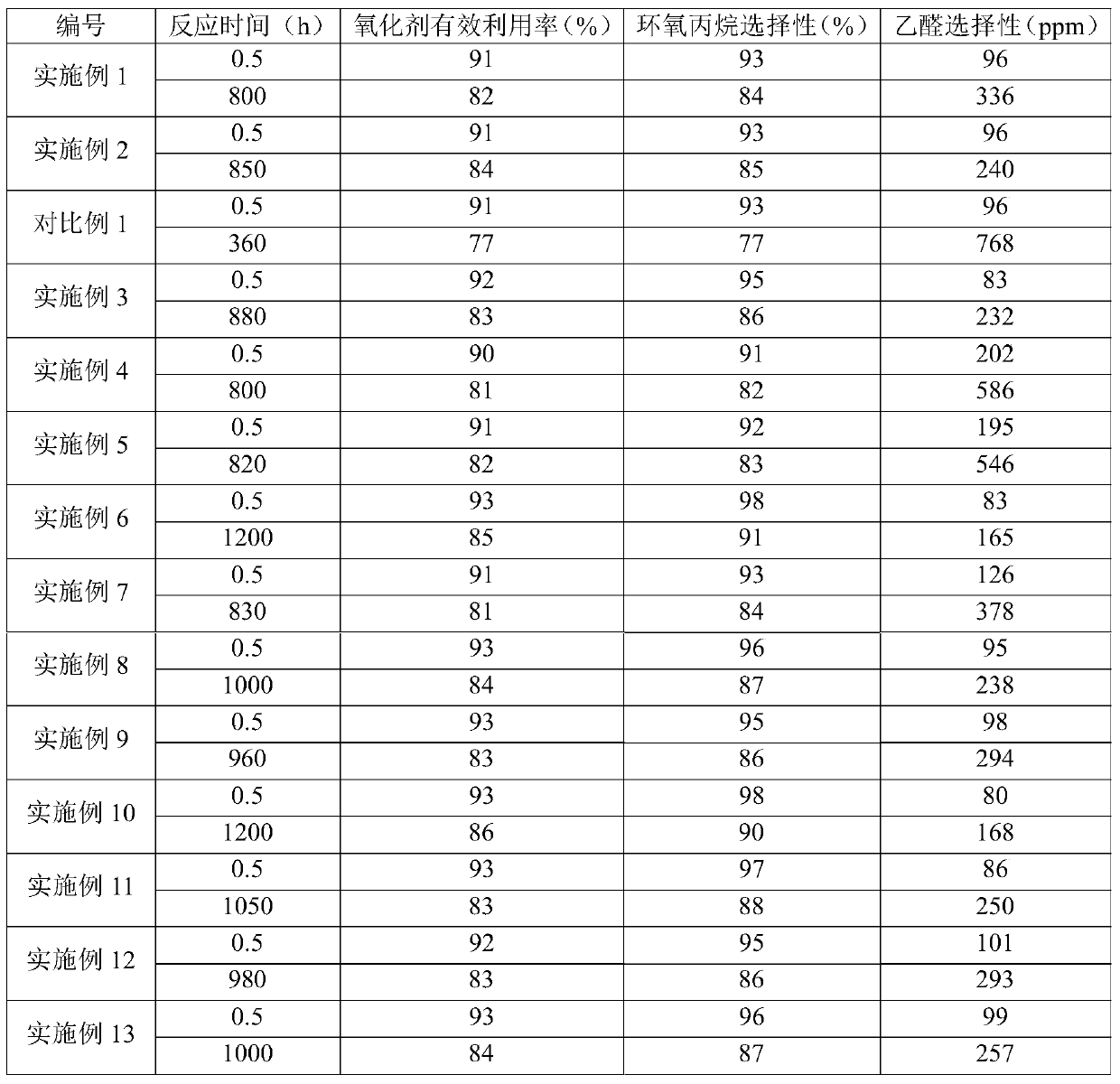A method for oxidizing olefins
A technology for olefins and oxidants, applied in chemical recovery, organic chemistry, etc., can solve problems such as catalyst deactivation, large fluctuations in catalyst activity and selectivity, and reduced catalyst activity and selectivity, achieving low selectivity and suitable for large-scale The effect of large-scale application and simple and easy method
- Summary
- Abstract
- Description
- Claims
- Application Information
AI Technical Summary
Problems solved by technology
Method used
Image
Examples
Embodiment 1
[0082] The catalyst (volume average particle diameter is a spherical catalyst of 700 μm, the content of titanium silicon molecular sieve TS-1 in the catalyst is 80% by weight, the content of silicon oxide is 20% by weight, and the density is 0.74g / cm 3 ) is packed in a fixed-bed reactor to form a catalyst bed of equal diameter, wherein the number of the catalyst bed is 1 layer.
[0083]Propylene, hydrogen peroxide (provided in the form of 30% by weight hydrogen peroxide) as oxidant and acetone as solvent were mixed and fed from the bottom of the fixed bed reactor and flowed through the catalyst bed. Among them, the molar ratio of propylene to hydrogen peroxide is 1:0.5, the molar ratio of propylene to solvent acetone is 1:5, and the weight hourly space velocity of propylene is 1.5h -1 . The initial reaction temperature was 40° C., and the pressure in the fixed-bed reactor was controlled to 2.0 MPa during the reaction.
[0084] During the reaction process, the composition of ...
Embodiment 2
[0087] Adopt the same method as Example 1 to oxidize propylene, the difference is that during the reaction process, when condition 1 is met for the first time, the reaction temperature is increased by 0.02-2°C / day until condition 2 is met, and the reaction temperature is stopped. And keep it as the temperature after raising; When meeting condition 1 for the 2nd time, improve the quality of hydrogen peroxide in the liquid mixture with the amplitude of 0.02-5% / day (realize by increasing the concentration of hydrogen peroxide in hydrogen peroxide, Correspondingly reduce the consumption of hydrogen peroxide, to keep the mol ratio of hydrogen peroxide and propylene constant) until satisfying condition 2, stop improving the quality of hydrogen peroxide in the liquid mixture and keep as the numerical value after raising, and so on (that is, When condition 1 is met for the odd number of times, increase the reaction temperature by 0.02-2°C / day until condition 2 is met; when condition 1 ...
Embodiment 3
[0093] Adopt the same method as embodiment 2 to oxidize propylene, the difference is that the titanium-silicon molecular sieve TS-1 in the catalyst is replaced by an equal amount of hollow titanium-silicon molecular sieve (that is, the hollow titanium-silicon molecular sieve is formed, and the content of the hollow titanium-silicon molecular sieve is 80 % by weight, the content of silicon oxide is 20% by weight, and the density of the catalyst is 0.69g / cm 3 ).
[0094] The reaction was carried out for 880 hours. At the end of the reaction, the reaction temperature was 48° C., and the concentration of hydrogen peroxide in hydrogen peroxide was 57% by weight. The results of 0.5 hours and 880 hours of reaction are listed in Table 1.
PUM
| Property | Measurement | Unit |
|---|---|---|
| length | aaaaa | aaaaa |
| adsorption capacity | aaaaa | aaaaa |
| particle size | aaaaa | aaaaa |
Abstract
Description
Claims
Application Information
 Login to View More
Login to View More - R&D
- Intellectual Property
- Life Sciences
- Materials
- Tech Scout
- Unparalleled Data Quality
- Higher Quality Content
- 60% Fewer Hallucinations
Browse by: Latest US Patents, China's latest patents, Technical Efficacy Thesaurus, Application Domain, Technology Topic, Popular Technical Reports.
© 2025 PatSnap. All rights reserved.Legal|Privacy policy|Modern Slavery Act Transparency Statement|Sitemap|About US| Contact US: help@patsnap.com



